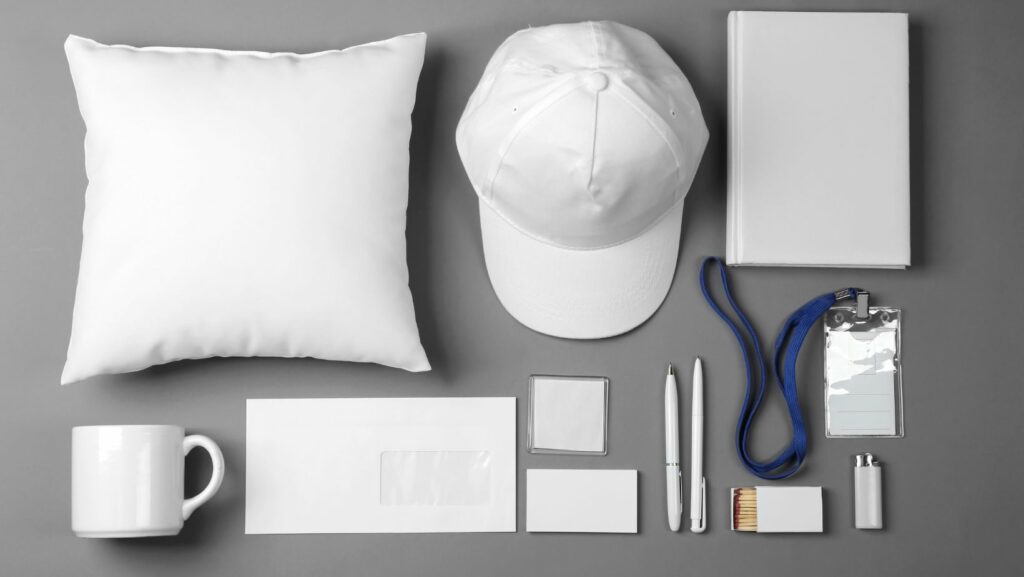In the vibrant world of branding, a mockup isn’t just a preview, it’s a powerful tool that breathes life into an idea. It’s the magic wand that transforms a simple logo or design into a tangible, immersive experience. But what exactly is a branding mockup, and why is it such a game-changer in the branding industry?
Branding Mockup
In the realm of design and marketing, a branding mockup remains an invaluable entity. It acts as a tangible, visual representation, allowing an effective communication of the brand’s essence. A well-crafted mockup generates a life-like rendition of how the product or service looks in a real-life context, creating an aura around the brand that’s discernible and resonant.
Importance in Brand Presentation
 When presenting a brand to internal teams or potential investors, a branding mockup emerges as a crucial tool. It brings clarity and substance, converting abstract brand elements into concrete visuals. Stakeholders can visualize the end product, minimize miscommunication, and align their understanding based on this representation.
When presenting a brand to internal teams or potential investors, a branding mockup emerges as a crucial tool. It brings clarity and substance, converting abstract brand elements into concrete visuals. Stakeholders can visualize the end product, minimize miscommunication, and align their understanding based on this representation.
A branding mockup does more than render graphics on a screen – it presents a brand story. For instance, a cosmetics brand uses mockups to set the stage for the product and storytelling. The audience sees the product in action, housed in elegant packaging, portrayed attractively in a real-life setting – the alignment maintains the brand’s message, enriching the consumer’s understanding and interaction.
Key Elements of a Successful Branding Mockup
Logos and Color Schemes
Consistent use of logos and color schemes heightens brand recognition. These elements serve as the visual DNA of a brand. Their systematic utilization in a branding mockup exhibits the brand’s identity, reflecting its vision and values. For instance, Adobe’s logo – a distinctive red ‘A’ – is easily recognizable, and the color scheme emphasizes creativity and passion.
Typography and Imagery
 Typography and imagery play a substantial role in a successful branding mockup. Typography, encompassing font type, size, and color, imparts a particular brand sentiment. Formal brands often favor serif fonts, while modern and casual brands lean towards sans serif fonts. Imagery, on the other hand, supports the brand message, acting as a visual metaphor for the brand. Apple, for instance, employs sleek and minimalist imagery, resonating with its brand philosophy of simplicity and elegance.
Typography and imagery play a substantial role in a successful branding mockup. Typography, encompassing font type, size, and color, imparts a particular brand sentiment. Formal brands often favor serif fonts, while modern and casual brands lean towards sans serif fonts. Imagery, on the other hand, supports the brand message, acting as a visual metaphor for the brand. Apple, for instance, employs sleek and minimalist imagery, resonating with its brand philosophy of simplicity and elegance.
Marrying these key elements – logos, color schemes, typography, and imagery – an enthralling and persuasive branding mockup comes into being, fortifying the brand’s message, and fostering recognition.
Tools and Software for Creating Branding Mockups
 Creating a unique and visually appealing branding mockup necessitates the use of specialized tools and software. Software programs like Adobe Photoshop, Illustrator, and Sketch are widely recognized for their extensive feature sets, catering to various design needs. Adobe Photoshop, for instance, excels in editing photos, creating digital paintings, and designing graphics. It’s known for its versatile toolkit and customizable workspace, making it an optimal choice for creating intricate branding mockups. Illustrator, on the contrary, specializes in creating vector graphics, an ideal attribute for designing logos and signage present in brand mockups.
Creating a unique and visually appealing branding mockup necessitates the use of specialized tools and software. Software programs like Adobe Photoshop, Illustrator, and Sketch are widely recognized for their extensive feature sets, catering to various design needs. Adobe Photoshop, for instance, excels in editing photos, creating digital paintings, and designing graphics. It’s known for its versatile toolkit and customizable workspace, making it an optimal choice for creating intricate branding mockups. Illustrator, on the contrary, specializes in creating vector graphics, an ideal attribute for designing logos and signage present in brand mockups.
Besides Adobe products, Sketch also claims a significant stake in the design software landscape. As a vector-based design tool, it’s expressly built for user interface (UI) and user experience (UX) design. Its robust, user-friendly platform and ample collaborative features make it highly suitable for branding mockup creation.
Step-by-Step Guide to Making a Branding Mockup
- Identify the Brand Elements: Ascertain the branding components — logos, color schemes, typography, and imagery. These play a mythical role in enhancing the brand’s identity in a branding mockup.
- Accumulate Tools: Gather the essential tools and software. Top picks include Adobe Photoshop, Illustrator, Sketch, Figma, Canva, and InVision. These offer various features and prototype options, pivoting on model design needs.
- Choose Templates: Opt for pre-designed mockup templates offered by the chosen software, fitting specific requirements, and enhancing the level of realism and interactivity in the design. Factor in design team skills and desired degree of realism in the final branding mockup.
- Design and Edit: Implement logos, typography, imagery, and color schemes into the template. Use digital tools to tweak and adjust the design, revealing any latent errors and paving the way for potential design improvements.

